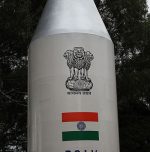Test ISRO rocket that can use oxygen directly from atmosphere

ISRO is all set to continue its string of innovation. Recently, they successfully tested the Re-usable Satellite Launch Vehicle Technology Demonstrator (RLV-TD), now ISRO is planning to test an air-breathing propulsion system.
This unique system uses the oxygen in the atmosphere for combustion of fuel instead of the traditional system of using liquefied oxygen. Normally, the liquid oxygen has to be carried by the launch vehicles which increases its weight.
Satellite launch vehicles combust propellants with the help of an oxidizer and a fuel. Using the air-breathing propulsion system, ISRO is planning to use atmospheric oxygen for the combustion of fuel. This system can be used for up to 50 km from the earth’s surface. Using this system will reduce the lift-off mass of the launch vehicle. The lift off weight plays a crucial role in the efficiency of the vehicle.
K. Sivan, Director of the Thiruvananthapuram-based Vikram Sarabhai Space Centre said that a mission to test this technology would be launched either in the last week of June or early July from the Satish Dhawan Space Centre at Sriharikota. The test would use a sounding rocket.
This new propulsion system will further push the innovation of ISRO in developing a reusable launch vehicle with longer flight duration.
ISRO has already successfully launched its first indigenous RLV-TD from Sriharikota. The launch vehicle is called the RLV-TD HEX 01 mission. It was a success as the launch vehicle came back and landed in the Bay of Bengal just as planned.
After the technology is completely developed, the launch vehicle can be used multiple times to send satellites into space. This will reduce the launch cost a lot. It saves a lot of money too because in the current system, the launch rocket goes to waste every time a satellite is launched. The next step is to get the complete vehicle back and make it land on a 5 km runway.
Image Reference: TheBetterIndia










Leave a Reply